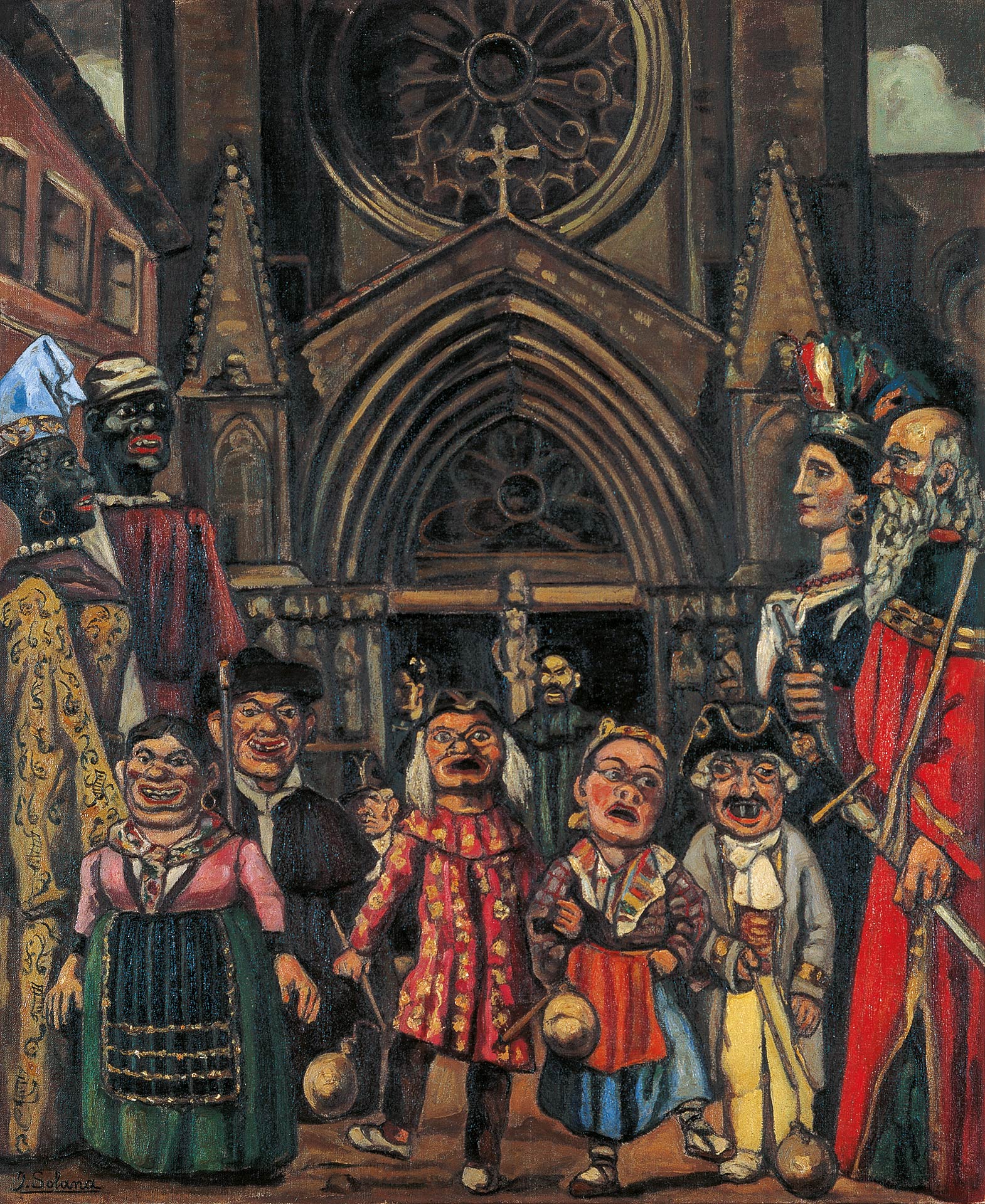
José Gutiérrez Solana (Madrid, 1886-1945)
Giants and Carnival Figures
circa 1932
WORK INFORMATION
Oil on canvas, 144 × 125 cm
OTHER INFORMATION
Signed in the lower left-hand corner: "J. Solana" Inscriptions on the reverse, on the upper stretcher bar: "Gigantes y cabezudos"; on the central bar: "José G. Solana"
Giants and carnival figures with giant heads representing local historical characters are part of a popular tradition that dates back to the medieval festivals in which giants took part by dancing while the giant-headed figures chased the onlookers. To judge from the traditional costumes depicted here, this canvas seems to represent a scene in Aragon. Solana used it to offer another depiction of the anonymity of street culture in which the person is hidden behind a mask. This would be his preferred theme in his depictions of carnivals from this period onwards.
In this canvas Solana focuses on the description of the festival and the figures involved, creating a crowded composition in which the solid architectural forms of the doorway of a Gothic church preside over the scene. Colour is the predominant note, with a rich and broad range of tones that the artist used to create a cheerful, festive atmosphere.
Solana constructs the figures through a sculptural type of modelling, translating onto canvas his brilliant written description of La verbena del Carmen, the popular and traditional festival of giants and giant-headed carnival figures that was held in Madrid: “When they start to dance in a circle in the middle of the street, they make an extremely grotesque group [...]”.
María José Salazar

